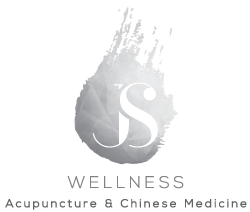
Acupuncture and herbal therapy provide a natural alternative to alleviate the symptoms of dermatological issues by treating the root cause of the problem.
Eczema
Acupuncture and Chinese herbal medicine treat eczema
Eczema is an inflammatory reaction of the skin caused by both internal and external allergens or inflammatory chemicals. The prevalence of eczema has risen dramatically in the United States over the past 50 years. I believe that this increase is due to unhealthy eating of processed foods that cause inflammation within the gut and skin, increase in mental stress, and living an overall unhealthy lifestyle.
Acupuncture and Chinese Herbal Medicine both use a holistic framework when looking at the body that allows the practitioner to be specific in treating each patients unique presentation of eczema. This medicine will help in decreasing your associated symptoms such as itchiness, redness, hardening of the skin (lichenification), and the frequency of flare-ups. When combined with dietary changes the patient will experience true and long lasting results that will give them more confidence on how to naturally manage this chronic and uncomfortable condition.
What are the different types of Dermatitis?
Atopic dermatitis is defined as an eczematous eruption of the skin that is very itchy (pruritic), recurrent, and tends to symmetrically affect the flexoral areas of the body. Atopic dermatitis usually begins in early childhood and and goes through periods of remission and exacerbation through one’s life. It is believed that this condition does have a hereditary component to it as well as a link with both asthma and allergies. The major criteria required for diagnosis of atopic dermatitis include having any four of the following
- pruritus
- young age at onset
- typical morphology and distribution,
- flexural lichenification and linearity in adults; facial and extensor involvement in infants,
- chronic and relapsing course,
- personal or family history or atopy (asthma, allergic rhinoconjunctivitis, atopic dermatitis)
There are two types of contact dermatitis; allergic and irritant contact dermatitis. Allergic contact dermatitis is a delayed-type hypersensitivity reaction caused by skin contact with an allergen. Sensitivity to a particular allergen is required in making the diagnosis for allergic contact dermatitis. Some of the primary examples include poison ivy, poison oak and poison sumac dermatitis. Common causes include but are not limited to exposure to metals such as nickel, preservatives or other additives to skin products, fragrances, dyes, and topical medications such as hydrocortisone.
Irritant contact dermatitis is often caused by repeated exposure to mild irritants such as water, soaps, friction, and heat. In contrast to the allergic type of contact dermatitis, irritant contact dermatitis is non-specific and does not require sensitization to a particular allergen. One of the most common irritants is commercial laundry detergent. Others include acids, alkaline chemicals, oils, and even water. The three most common areas affected by irritant contact dermatitis are the hands, eyelids, and lips.
Topical healing alternatives for eczema
When managing eczema with topical products people tend to use a mixture of steroidal creams to manage allergic reactions, anti-histamines to decrease itch, and emollients to keep in moisture. What tends to happen however, because these products are not addressing the root of the problem, the person begins to develop a dependency and fails to find lasting relief from symptoms. Topical Chinese herbal medicines can address the uncomfortable symptoms of eczema with little to no side effects and without developing a dependency. Medicinal herbs are typically mixed with natural oils and bees wax to make therapeutic salves to help with itching and other symptoms associated with eczema. Petroleum emollients are replaced with medicinal shea or cocoa butter to help with keeping moisture on the dry affected areas.
Psoriasis
Psoriasis is a chronic condition that manifests on the skin as red, itchy patches with silvery and dry scales. Psoriasis is an autoimmune condition and has been linked to problems associated with systemic inflammation, metabolic disorder, and diabetes. It can go through periods of remission and flare-ups while ranging to very severe to mildly annoying.
What are the different types of psoriasis?
There are five major types of psoriasis. These include plaque, guttate, inverse, pustular, and erythrodermic psoriasis. Each type is associated with specific symptoms.
- Plaque: This is the most common type of psoriasis. It presents with thick red patches of skin covered by silvery white skin.
- Guttate: This type is characterized by numerous small reddish pink sores which resemble drops of wax on the skin. This form is associated and usually occurs after a streptococcal infection. Guttate psoriasis can develop into a chronic plaque psoriasis.
- Inverse: Inverse psoriasis presents with smooth red patches of skin usually at the armpits and groin areas.
- Pustular: This type of psoriasis is not commonly seen in our clinic. It manifests with various sized yellowish blisters and is accompanied by high fever and swollen joints. Hospital admission is typically required.
- Erythrodermic: Presents with intense inflammation with a red and peeling rash covering a large portion of the body.
What causes psoriasis according to Chinese medicine?
It is important to know that with any disease, Chinese medicine diagnosis and treatment involve a holistic way of viewing and working with its associated symptoms. Psoriasis which is now seen as an autoimmune and a systemic inflammatory problem in Western medicine is also diagnosed and treated in this way. Here are a list of the possible causes and contributing factors according to Chinese medical theory:
- External Pathogenic Factors or Allergens
- Inflammatory Diet and dietary irregularities
- Emotional stress and sleep disturbances
- Damage to body’s moisturizing capabilities
- Accumulation of internal stagnation and dampness
All of these causative factors contribute to the improper nourishment of the skin either through not allowing the skin to receive nourishment or from the body’s inability to nourish. This then allows the presence of heat to manifest on the skin to create the common symptoms associated with psoriasis.

